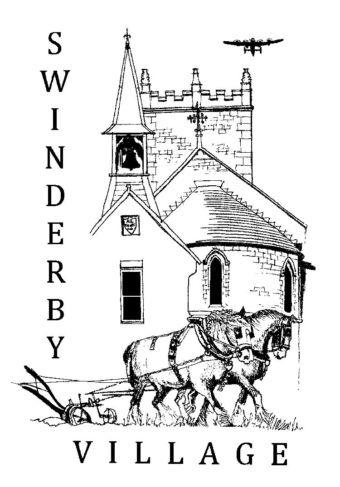
The first firm historical evidence of the existence of Swinderby comes from the Domesday Book of 1086, where it was recorded under the jurisdiction of Eagle. In the twelfth century, King Stephen (circa 1092-1154) granted the Manor of Eagle to the military-religious order the Knights Templar. Soon after, Henry II (1135-1189) also granted the Knights Templar the churches of Eagle, Swinderby and North Scarle.
The Manor and Rectory of Swinderby remained with the orders of the Knights Templar or Knights Hospitaller until the middle of the sixteenth century when on payment of a fee, the Manor of Swinderby was transferred to Richard Disney (D’Isney) of Norton Disney and William Ryggs of Clerkenwell, London. Richard’s grandson, Sir Henry Disney (1569-1641), started the enclosure of Swinderby and this was completed by Sir Henry’s son, John in 1658/9 . He also built several cottages for the poor and gave those who lived there grazing rights along the lanes and on 20 acres of land at nominal rents. Most of the land and the cottages were eventually sold in the late 18th century and the money was used to establish a Poor Trust which still operates for the benefit of parishioners today.
In 1771, listings by the Reverend John Disney (1746-1816) reveal that the village at that time hosted two blacksmiths, one butcher, 17 farmers, three wheelwrights, one weaver, one schoolmaster and three publicans. The total population of the village was 224 and it wasn't until the mid -nineteenth century that this grew to over 500. The 2011 census records the population of Swinderby at 648, with only one public house (The Plough) on the High Street.
All Saints Church is the oldest building in the village. The west tower of the church and perhaps parts of the south wall are all that remain externally of the original twelfth century building. The corner stones on the tower suggest it was once freestanding, providing refuge for villagers in times of danger. Inside the church there are Norman arches and a piscina from the same period. The church has been redeveloped regularly and evidence survives of work from the 12th, 13th, 15th, 17th, 19th and 20th centuries. In 1879 extensive renovations, at a cost of £861, were performed including the addition of the rounded apse, the chancel arch and the organ chamber.
The present school was built in 1849 and replaced the original school room at the far end of the High Street. The old school room became the village’s reading (and events) room for a period, while the schoolmaster and his family continued to live in the adjacent schoolhouse well into the twentieth century. The reading room became less important in the 1920s, when an officers’ mess was brought from Newark, re-erected and used for 50 years as the village hall. The present village hall was built in two phases in 1977 and in 1990 when the officers’ mess was finally demolished.
Other than the church, the oldest building in the village is believed to be Manor House on the High Street, dating from the late seventeenth century. As expected, there are a number of other listed buildings in the Village including the signal box at the station.
The first Methodist Chapel was built in the village in 1824 on land which had once been a small orchard. This was replaced in 1869 by the present building when it was possible to enlarge the chapel because of further land acquisitions.
RAF Swinderby on the opposite side of the Fosse Way, was first operational on the 14th September 1940 when Polish airmen flew to attack a target at Boulogne Harbour. In 1942 RAF Swinderby started to focus on training recruits and by March 1943 there were over 3,000 personnel based at the station. After the war it continued to train recruits until its closure in 1993.
Geoff Lloyd January 2018
